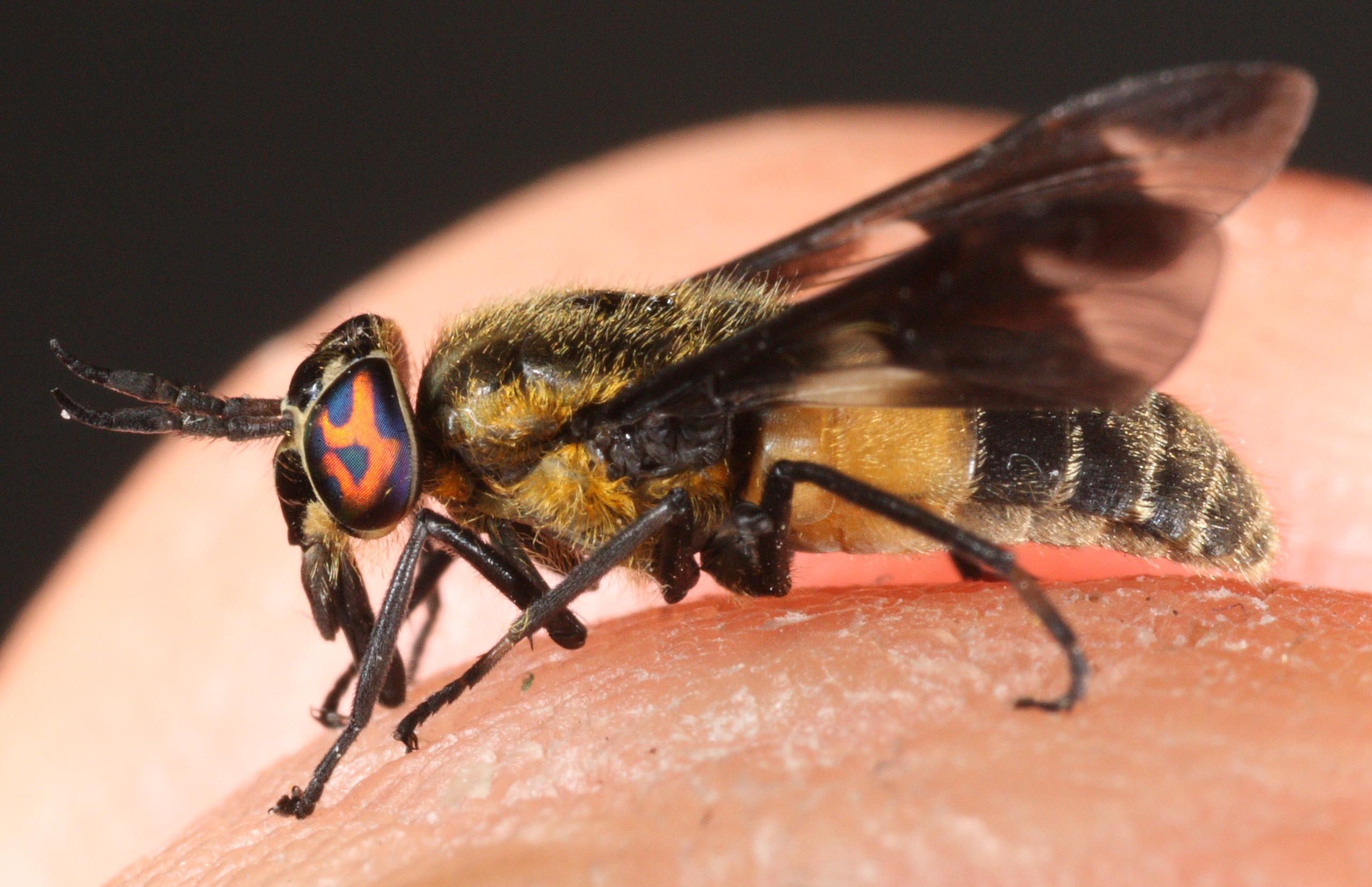Chrysops Caecutiens on:
[Wikipedia]
[Google]
[Amazon]
''Chrysops caecutiens'', common name splayed deer fly, is a species of
Commanster
/ref> The mesonotum and the scutellum are glossy black with yellow-brown hairs. The compound eyes have red and green reflections, with dark spots. The transparent wings have dark brown patches, located at the top and at the centre of each wing. The abdomen shows distinct black inverted-V marking (hence the common name of "splayed" deer fly). The legs are black, included the tibiae on the middle pair of legs. They are active from May to September.
/ref> in order for their
horse fly
Horse-flies or horseflies are true flies in the family Tabanidae in the insect order Diptera. They are often large and agile in flight, and only the female horseflies bite animals, including humans, to obtain blood. They prefer to fly in su ...
belonging to the family Tabanidae
Horse-flies or horseflies are true flies in the family Tabanidae in the insect order Diptera. They are often large and agile in flight, and only the female horseflies bite animals, including humans, to obtain blood. They prefer to fly in s ...
. It is also known by the colloquial name Scotch Cleg.
Description
''Chrysops caecutiens'' reaches a length of about .J.K. LindseCommanster
/ref> The mesonotum and the scutellum are glossy black with yellow-brown hairs. The compound eyes have red and green reflections, with dark spots. The transparent wings have dark brown patches, located at the top and at the centre of each wing. The abdomen shows distinct black inverted-V marking (hence the common name of "splayed" deer fly). The legs are black, included the tibiae on the middle pair of legs. They are active from May to September.

Biology
Thelarva
A larva (; plural larvae ) is a distinct juvenile form many animals undergo before metamorphosis into adults. Animals with indirect development such as insects, amphibians, or cnidarians typically have a larval phase of their life cycle.
The ...
e of the splayed deer fly feed upon algae and organic matter in damp muddy soils.
The adult female flies feed on mammal
Mammals () are a group of vertebrate animals constituting the class Mammalia (), characterized by the presence of mammary glands which in females produce milk for feeding (nursing) their young, a neocortex (a region of the brain), fur or ...
ian blood (including on roe deer
The roe deer (''Capreolus capreolus''), also known as the roe, western roe deer, or European roe, is a species of deer. The male of the species is sometimes referred to as a roebuck. The roe is a small deer, reddish and grey-brown, and well-adapt ...
),Global species/ref> in order for their
eggs
Humans and human ancestors have scavenged and eaten animal eggs for millions of years. Humans in Southeast Asia had domesticated chickens and harvested their eggs for food by 1,500 BCE. The most widely consumed eggs are those of fowl, especial ...
to mature properly. When they bite, they inject saliva with an anti-coagulating agent that prevent the blood clotting. The structure of the ommatidia in the midregion of the eyes of the females may use high polarization to assist in host-finding. Adult males and females feed also on nectar and pollen of flowers (mainly ''Leucanthemum vulgare
''Leucanthemum vulgare'', commonly known as the ox-eye daisy, oxeye daisy, dog daisy, marguerite (french: Marguerite commune, "common marguerite") and other common names, is a widespread flowering plant native to Europe and the temperate regions ...
'').
Distribution
This species is present in most ofEurope
Europe is a large peninsula conventionally considered a continent in its own right because of its great physical size and the weight of its history and traditions. Europe is also considered a Continent#Subcontinents, subcontinent of Eurasia ...
, the eastern Palearctic realm
The Palearctic or Palaearctic is the largest of the eight biogeographic realms of the Earth. It stretches across all of Eurasia north of the foothills of the Himalayas, and North Africa.
The realm consists of several bioregions: the Euro-Sibe ...
, and the Near East
The ''Near East''; he, המזרח הקרוב; arc, ܕܢܚܐ ܩܪܒ; fa, خاور نزدیک, Xāvar-e nazdik; tr, Yakın Doğu is a geographical term which roughly encompasses a transcontinental region in Western Asia, that was once the hist ...
.
Habitat
These horseflies preferably live in shaded marshlands and in damp woodlands.References
{{Taxonbar, from=Q5114915 Diptera of Europe Tabanidae Flies described in 1758 Articles containing video clips Taxa named by Carl Linnaeus